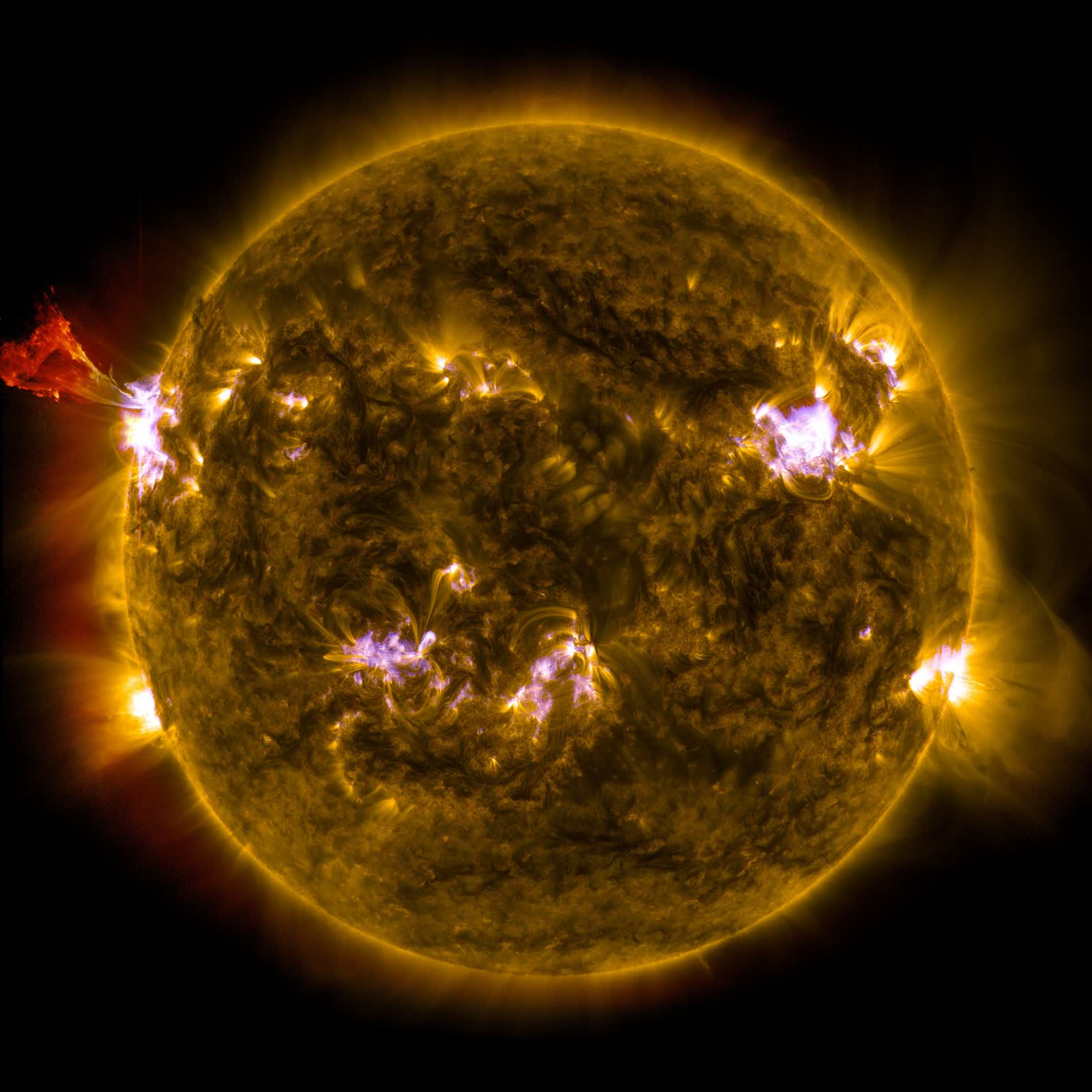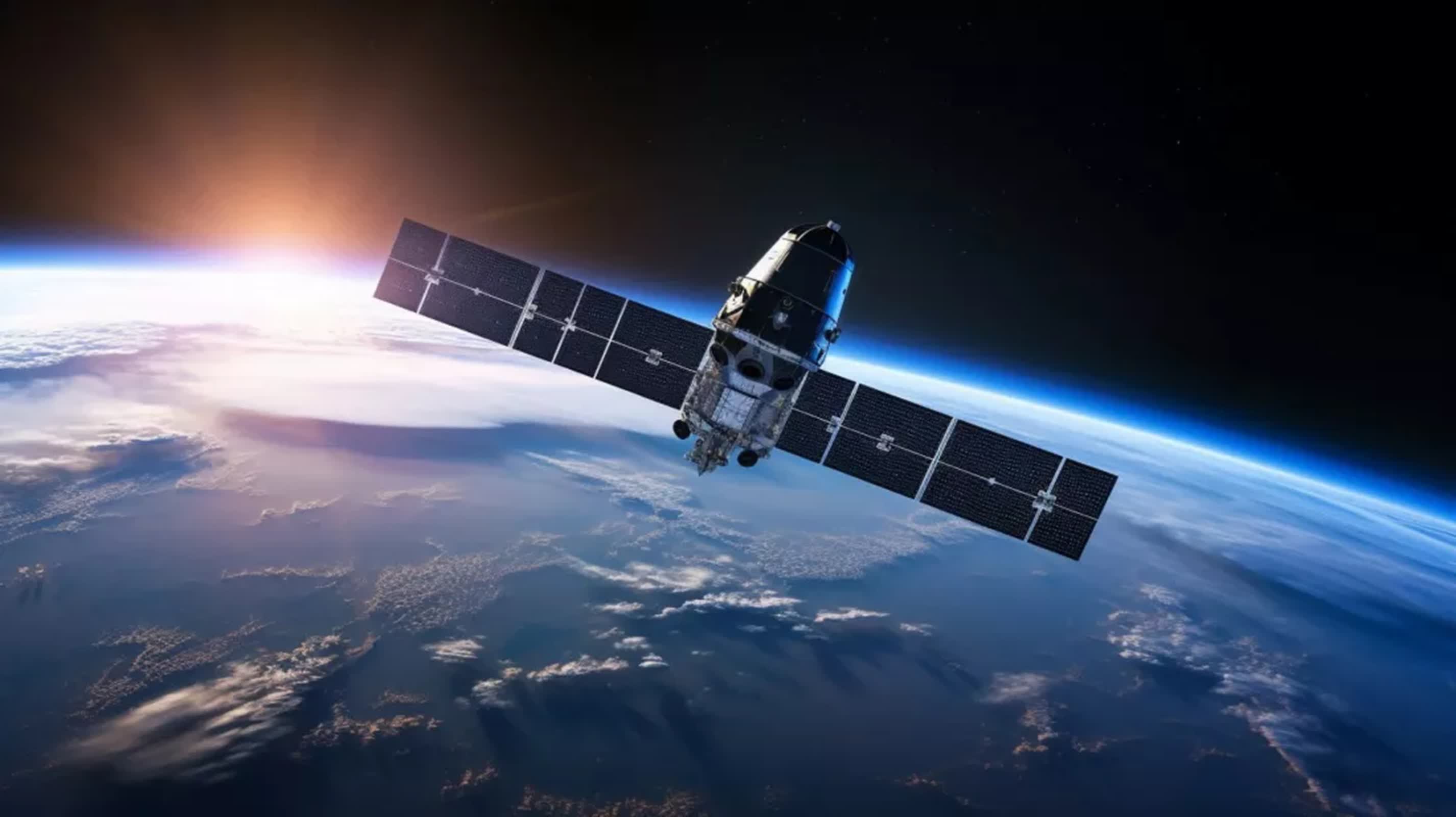The big picture: The space industry faces a pressing question: How can thousands of satellites safely coexist with the sun's volatile outbursts? The answer could shape not only the future of space commerce but also the safety of our skies – and even the farmlands below.
A 2.5-kilogram chunk of metal found on a Canadian farm in August 2024 has become a symbol of a growing dilemma in space exploration. The fragment – identified as part of a SpaceX Starlink satellite – highlights an unintended consequence of the satellite boom: the sun's unpredictable behavior is pulling spacecraft back to Earth faster than anticipated, occasionally leaving debris behind.
As the sun approaches the peak of its 11-year activity cycle, known as solar maximum, its eruptions trigger geomagnetic storms that ripple through Earth's atmosphere. These storms heat and expand the upper atmosphere, increasing drag on satellites and shortening their orbital lifespans.
Denny Oliveira of NASA's Goddard Space Flight Center in Maryland and his colleagues have studied the extent of this effect on Starlink satellites. "We found that when we have geomagnetic storms, satellites re-enter faster than expected [without solar activity]," Oliveira told New Scientist. During solar maximum, the lifetime of a satellite could be reduced by up to 10 days, the researchers say.

The stakes are higher than ever due to the rise of mega-constellations. SpaceX alone has launched over 7,000 Starlink satellites, with plans to deploy tens of thousands more. This surge has turned low Earth orbit into a bustling highway, where satellites are launched and deorbited at unprecedented rates.
There are also several re-entries each week, and the constellation is constantly replenished. "It's the first time in history we have so many satellites re-entering at the same time," Oliveira told the publication.
Between 2020 and 2024, 523 Starlink satellites were tracked re-entering our atmosphere, where they are designed to burn up entirely. "In a few years, we will have satellites re-entering every day," Oliveira said.
Some Starlink satellites are intentionally lowered into the atmosphere at the end of their life, while others descend naturally due to atmospheric drag when they fail. Oliveira found that during a recent geomagnetic event – when 37 Starlink satellites re-entered – those orbiting below 300 kilometers re-entered in around five days, down from more than 15 days under normal conditions.
"This is the first solar maximum that we've had in the mega constellation era," Samantha Lawler at the University of Regina in Canada said. "So it is important to do these measurements."
Sean Elvidge at the University of Birmingham, UK, says this effect could benefit satellite operators, such as SpaceX, by removing dead satellites from orbit more quickly than they would otherwise pose a danger to other satellites.
"It's speeding up that process," Elvidge says. However, it could limit our ability to operate satellites in orbits below 400 kilometers, known as very low Earth orbit. "It shows that could be challenging," he said.
There is also a possibility that quicker re-entries could make it less likely that the satellites will completely burn up in Earth's atmosphere, Oliveira says. "You could have a chance of an object reaching the ground," he said.
In August 2024, a 2.5 kilogram piece of a Starlink satellite was found on a farm in Saskatchewan, Canada, the only known instance of any piece of Starlink satellite surviving re-entry, according to SpaceX. Lawler, who lives in Saskatchewan, says she worries that more satellite debris might have made it to the ground elsewhere.
"This is the easiest place in the world to find Starlink debris," she says, because the land is so flat and open, and it is under the densest part of satellite paths in the constellation. "If we found one [piece] here, how many did we miss?"
